Every day for over three years, I’ve walked past this row of crepe myrtle trees in my neighborhood.
But only recently did I notice something unusual hidden inside this busy network of branches. The owner of the property had just pruned the trees, and a freshly cut section of limb on one of the trees caught my eye. I noticed that a branch emanating from that limb appeared to be fully connected to a separate vertical limb from the same tree.

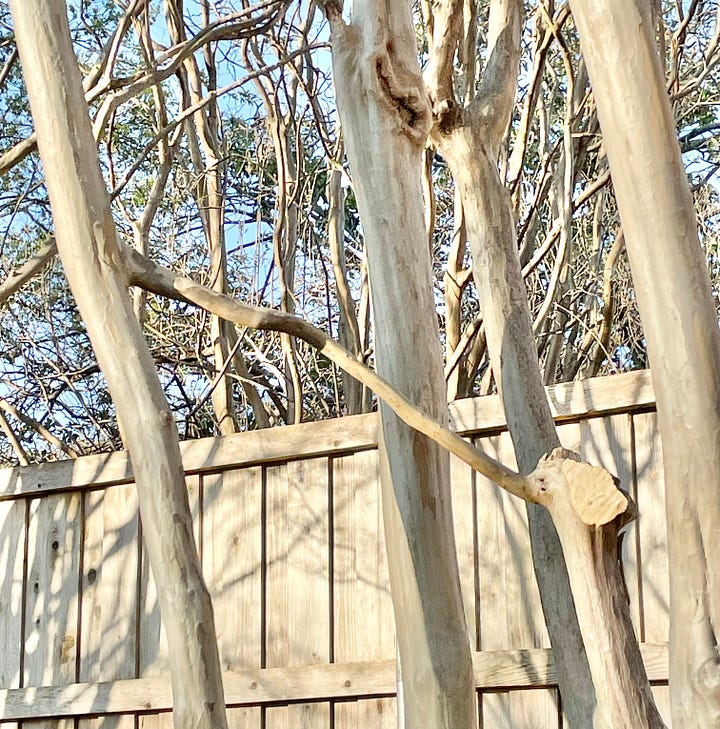
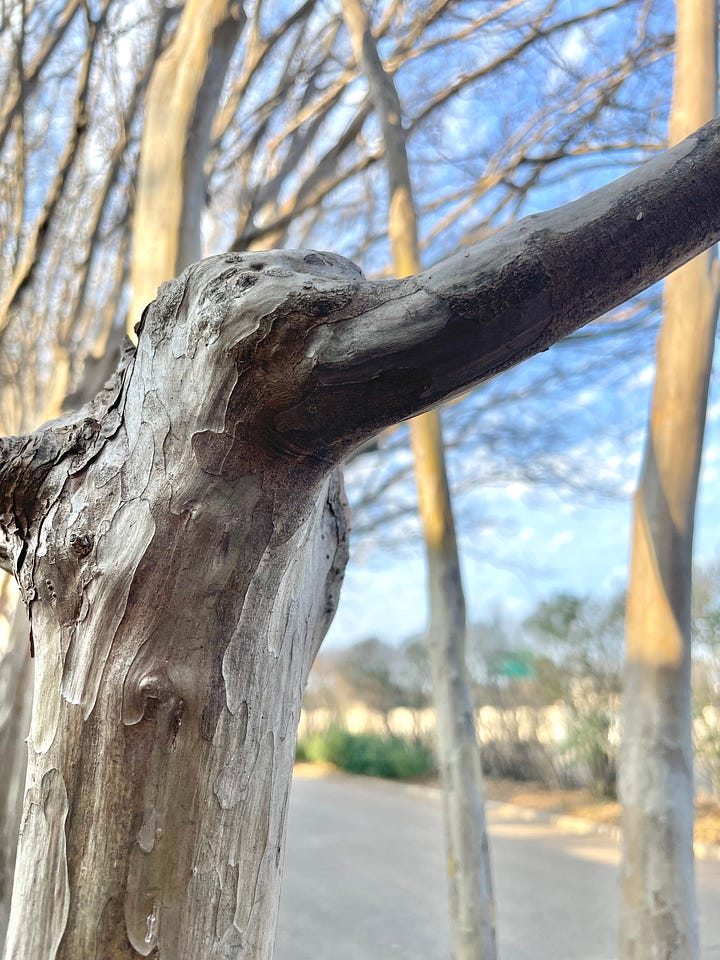
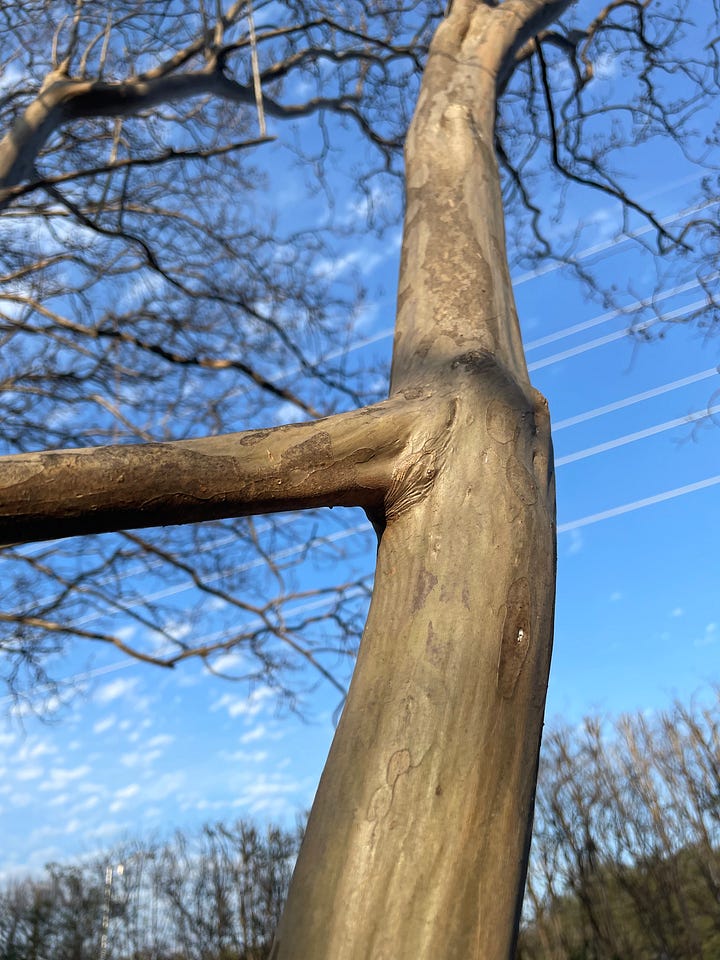
You can really appreciate it on video: https://youtube.com/shorts/Z3CATQOr8uk?feature=share
I had never seen anything like it before and wondered how this formation came to be.
After a bit of research, I learned that this phenomenon is called inosculation. The word inosculate is derived from the Latin roots in + ōsculātus, “to kiss into or against,” and can mean to blend, open into, unite, or interjoin. It’s essentially a process of natural grafting. Two branches growing in close proximity rub together in the wind until the outer layers of bark, cortex, and endoderm wear away, exposing the vascular cambium of each branch.
The vascular cambium has unique properties that are unlike those of any other layer. It consists of stem cells—flattened, undifferentiated cells that have retained their embryonic capacity for growth and differentiation.1 The cambium is the most vulnerable layer, as its cells possess no defense capabilities—their protection comes from the defense structures in the layers that surround them2—yet they are crucial for maintaining stem growth and tree integrity. It’s precisely this vulnerability and defenselessness that enables the cambium layers of the branches to fuse. As they do so, they produce bark cells outwardly until the wounds are completely enveloped. Internally, the newly fused cambium builds new xylem and phloem that unite the once-separate vascular systems into a unified one.
The example of inosculation I came across in my neighborhood took place between two branches on the same tree, but I found out that this phenomenon can also take place between separate but adjacent trees, even of completely different species. In those cases, the different trees end up forming a new hybrid organism.
After learning about inosculation, I went back to the row of crepe myrtles for a closer look. This time, I noticed different limbs in different stages of inosculation.

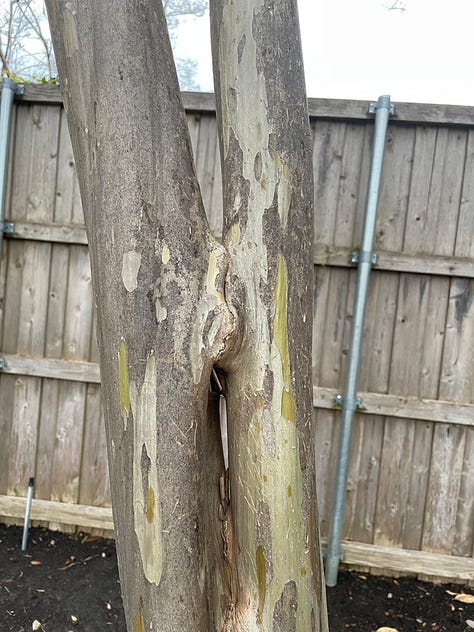

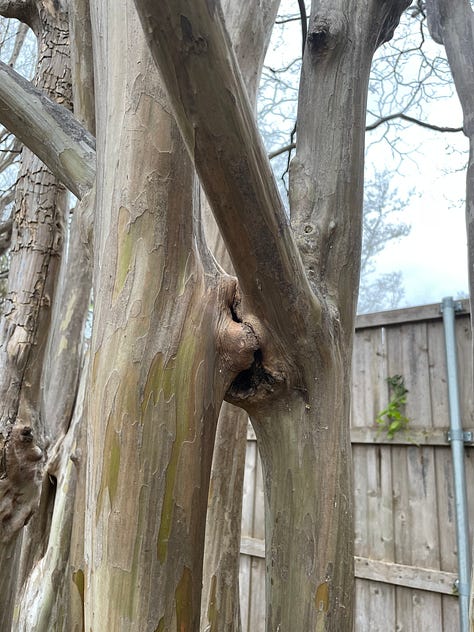
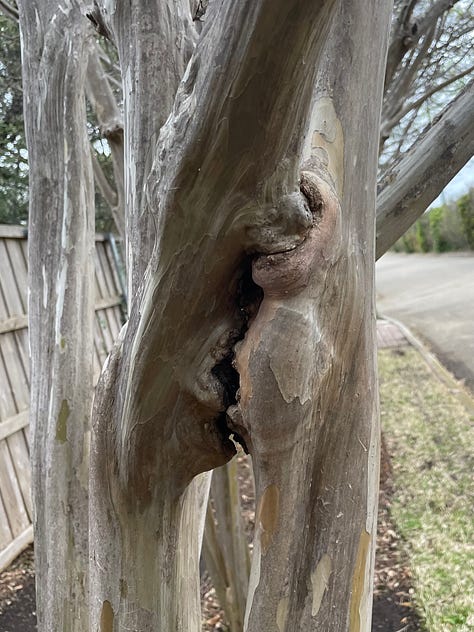
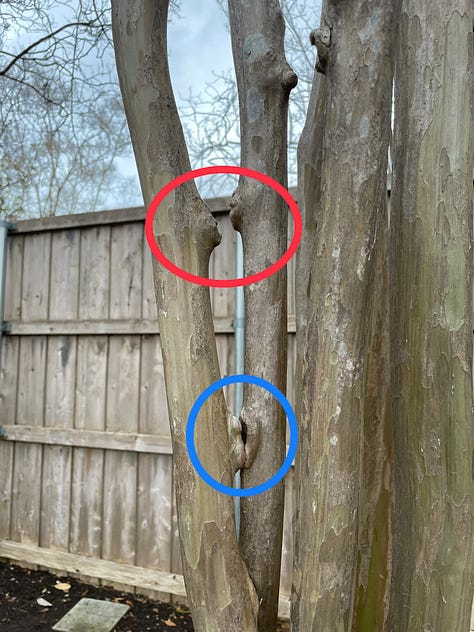
Some of the limbs, like the one I noticed initially, were already completely fused. Others were nearly fused, but there was still a seam present. Still others were in the process of fusing but still have a ways to go. In many places, though, it was evident that the process had halted at the scarring phase because the cambiums never fused (and never will). In the bottom right photo above, it’s evident from the scars that the limbs once rubbed against each other in those two specific spots. It’s also evident that the limbs grew up, out, and apart before the cambium layers had a chance to fuse. Perhaps the cambium layers were never exposed. Nevertheless, the limbs remain interconnected at the base/trunk.
I see in all these stages of inosculation—complete, in progress, and aborted—an incredible metaphor for the church. We are all branches growing from the same main trunk (John 15). The closer we are to one another, the greater the likelihood of there being friction between us, particularly when the wind blows (i.e., when there’s an external source of turbulence). In all cases, friction inflicts mutual injury; and injury always provokes our outer defenses first. If we lose proximity to one another in those defensive stages, even a little bit, we will grow up, out, and apart without further intimacy developing between us. We’ll inevitably heal over but with prominent scars that bear the mark of that injurious encounter.
In extra special cases, injury leads to a completely different outcome. It wears away the defensive layers of the involved parties until they reach a point of mutual vulnerability; and those “embryonic” parts of them that are most open to new growth and differentiation have the opportunity to intermingle. When that happens, it’s possible for such a degree of unity and interconnectedness to emerge that no perceptible scar remains. That is a thing of rare and extraordinary beauty. It provokes wonder.
The bulk of relationships in the church are probably best represented by inosculation-in-progress. Things could go either way.
I find comfort in the fact that all the relational possibilities are represented. My hope is to see more of that odds-defying, awe-inspiring interconnectedness. But even when it doesn’t happen, when I’m left with scars that remind me of past injurious encounters, I’m reminded that Christ remains our common root system, and that his blood connects us not only to Him but to one another.






Such a fantastic metaphor! I'd never heard of inosculation until this. Such a powerful picture of what Christ can do with our wounds and each other. Thank you for sharing it with us.
Brought tears to my eyes of hope related to this thoughtful prose on inosculation